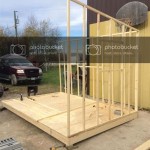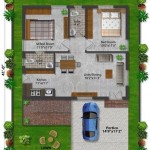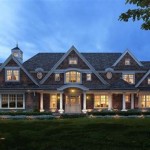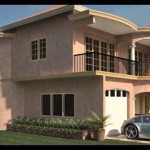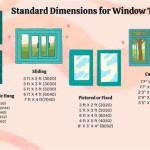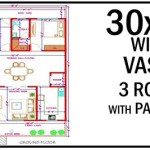Exotic Bird House Plans: A Comprehensive Guide to Design and Construction
The construction of an exotic bird house requires careful consideration of avian needs, environmental factors, and long-term maintenance. Unlike traditional birdhouses designed for native species, exotic bird houses must accommodate a wider range of sizes, behaviors, and climatic sensitivities. This article provides a comprehensive guide to designing and constructing exotic bird houses, covering essential planning, material selection, structural design, and safety considerations.
Understanding Avian Needs and Species-Specific Requirements
Before embarking on any construction project, it is crucial to thoroughly research the specific needs of the intended inhabitants. Exotic birds exhibit diverse behaviors, dietary requirements, and nesting preferences. Factors such as size, social behavior, climate tolerance, and natural habitats should be carefully considered when selecting a species and designing its housing. Certain bird species thrive in communal aviaries, while others prefer solitary dwellings. Understanding these preferences is essential for ensuring the well-being and natural behavior of the birds.
For example, for macaws, a large, spacious enclosure is necessary due to their significant wingspan and active nature. The house structure must be robust enough to withstand their powerful beaks and energetic movements. Parrots, known for their playful and inquisitive nature, require stimulating environments with perches, toys, and opportunities for enrichment. Cockatoos, which are highly social birds, may benefit from being housed in pairs or small groups, requiring larger multi-compartment structures. Finches, on the other hand, may thrive in smaller, densely planted aviaries, mimicking their natural habitat.
In addition to spatial requirements, nesting habits vary significantly among exotic bird species. Some prefer cavities, others build intricate nests, and some require open platforms. Provision of appropriate nesting materials and structures is vital for successful breeding. For instance, certain parrot species require a deep nesting box filled with wood shavings, while some finches prefer tightly woven nests made from grasses and feathers.
Dietary needs also impact the design. Feeders and water dispensers must be accessible and designed to minimize spillage and contamination. Consideration should be given to ease of cleaning and disinfection to prevent the spread of diseases. Proper ventilation is important to maintain air quality and prevent the buildup of harmful ammonia from droppings.
Material Selection and Construction Techniques for Durability and Safety
The selection of appropriate materials is critical for the long-term durability, safety, and aesthetic appeal of the exotic bird house. Materials must be non-toxic, weather-resistant, and capable of withstanding the wear and tear associated with avian activity. Untreated wood, certain types of metal, and specific composite materials are commonly used in bird house construction.
Wood is a popular choice due to its natural appearance and insulating properties. However, it's imperative to select naturally rot-resistant wood, such as cedar or redwood, or to treat the wood with non-toxic preservatives. Avoid using treated lumber containing arsenic or copper, as these can be harmful if ingested by birds. Consider the risk of splintering, and ensure all surfaces are smooth and free of sharp edges.
Metal, particularly stainless steel or galvanized steel, offers excellent durability and is resistant to chewing. Stainless steel is preferred for cages and enclosures, as it is non-toxic and easy to clean. Galvanized steel, while more affordable, should be carefully inspected for any signs of rust, as ingested rust can be harmful. Avoid using lead or other heavy metals, as these are toxic to birds.
Composite materials, such as fiberglass or certain types of plastic, can offer excellent weather resistance and durability. However, it's crucial to select materials that are specifically designed for animal enclosures and are free of harmful chemicals. Avoid using materials that can easily be splintered or chewed, as these pose a risk of ingestion.
Construction techniques should prioritize structural integrity and safety. All joints should be securely fastened using non-toxic adhesives and screws. Sharp edges and protruding nails or screws should be eliminated to prevent injuries. The house foundations should be structurally sound and resistant to ground movement and weather damage. Drainage should be incorporated to prevent water accumulation and rot.
Wire mesh, often used for cage construction, must be of suitable gauge and mesh size to prevent birds from escaping or getting their feet or beaks caught. The mesh should be securely attached to the frame, and the edges should be smooth and free of sharp points. Avoid using wire mesh with large openings, as these can pose a strangulation hazard.
Structural Design and Environmental Considerations
The structural design of the exotic bird house must address several key environmental factors, including climate control, ventilation, lighting, and security. Birds are susceptible to temperature extremes, drafts, and excessive humidity. The house structure should be designed to provide adequate insulation, ventilation, and protection from the elements.
Climate control is essential for maintaining a comfortable and healthy environment for exotic birds, especially those native to warmer climates. Insulation is crucial for retaining heat during colder months and keeping the interior cool during hotter months. The roof structure should be designed to minimize solar heat gain, using light-colored roofing materials or providing shade with trees or overhangs. Supplemental heating and cooling systems may be necessary, depending on the species and the local climate. Thermostats and timers can be used to regulate temperature and humidity levels.
Ventilation is critical for maintaining air quality and preventing the buildup of harmful gases and moisture. Natural ventilation can be achieved through strategically placed vents and windows. However, forced ventilation systems may be necessary in larger or enclosed aviaries. Fans can improve air circulation and prevent the buildup of stagnant air. Air filters can remove dust, pollen, and other airborne contaminants.
Lighting plays a vital role in avian health and behavior. Natural sunlight is essential for vitamin D synthesis and proper feather development. However, excessive exposure to direct sunlight can be harmful. The house structure should be designed to provide a balance of natural and artificial lighting. Full-spectrum lighting, which mimics natural sunlight, can be used to supplement natural light, especially during winter months. Timers can be used to regulate the duration and intensity of lighting, mimicking natural day-night cycles.
Security is paramount for protecting exotic birds from predators and preventing escapes. The house structure should be designed to be predator-proof, with secure doors, windows, and wire mesh. Buried wire mesh can prevent digging predators from entering the enclosure. Motion sensors and alarms can deter potential intruders. Double-door entry systems, with an inner and outer door, can prevent birds from escaping during entry and exit.
Beyond the basic structure, landscaping and environmental enrichment contribute significantly to the birds' well-being. Planting native trees, shrubs, and flowers will provide shelter, shade, and nesting opportunities. Water features, such as ponds or fountains, can provide drinking water and bathing opportunities. Perches, swings, and toys can stimulate natural behaviors and prevent boredom. The specific landscaping and enrichment elements should be tailored to the specific needs and preferences of the bird species.
Essential Safety Considerations and Maintenance Practices
Safety is a primary concern in the design and maintenance of exotic bird houses. Preventative measures should be taken to minimize the risk of injuries, illnesses, and escapes. Regular inspections, cleaning, and maintenance are essential for ensuring the long-term health and well-being of the birds.
One area of concern is preventing toxic exposure. Thoroughly research any materials being introduced into the environment, including paints, cleaning products, and plants. Many common household products and plants are toxic to birds. Avoid using Teflon-coated cookware, as overheating can release toxic fumes. Store cleaning products and pesticides away from the birds' reach. Use non-toxic cleaning agents and disinfectants. Ensure plants are non-toxic and free of pesticides.
Hygiene and sanitation are imperative for preventing the spread of diseases. Regularly clean and disinfect the house, including perches, feeders, and water dispensers. Remove droppings and uneaten food promptly. Change bedding and nesting materials regularly. Implement a quarantine protocol for new birds to prevent the introduction of diseases. Consult with a veterinarian specializing in avian medicine for advice on disease prevention and treatment.
Preventing escapes is crucial for the safety of the birds and the local ecosystem. Regularly inspect the house for any signs of damage or weakness. Repair any holes or gaps promptly. Ensure all doors and windows are securely latched. Clip the wings of flighted birds to prevent them from flying away. Microchip or band birds for identification purposes. Register the birds with local authorities or bird clubs.
Fire safety is an important consideration, particularly for indoor or heated enclosures. Install smoke detectors and fire extinguishers. Avoid using flammable materials near heat sources. Regularly inspect electrical wiring and appliances. Develop an emergency evacuation plan in case of a fire.
Maintenance routines are essential for the longevity of the structure and the bird's health. Regularly inspect the house for signs of wear and tear, rot, or pest infestations. Repair or replace damaged components promptly. Clean and disinfect the house regularly. Monitor the birds for signs of illness or stress. Provide fresh food and water daily. Maintain accurate records of feeding, cleaning, and medical treatments.

40 Beautiful Birdhouse Designs For Feathered Friends

40 Beautiful Bird House Designs You Will Fall In Love With Bored Art Houses Decorative Kits

40 Beautiful Birdhouse Designs For Feathered Friends

12 Cool Architectural Birdhouses Unique Bird Houses House Plans

40 Beautiful Birdhouse Designs For Feathered Friends

Making Wooden Birdhouses Ideas Plans And Designs Feltmagnet

Making Wooden Birdhouses Ideas Plans And Designs Feltmagnet

Making Wooden Birdhouses Ideas Plans And Designs Feltmagnet

40 Beautiful Birdhouse Designs For Feathered Friends

Decorative Bird Houses

